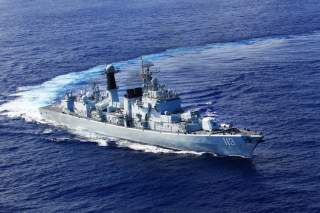Scarborough Shoal: A Chinese Noose around the Philippines' Neck
The new status quo between Beijing and Manila is hardly sustainable.
The Philippine case ought to be a shining example of how, in an era when outright shooting war may have become a less likely eventuality, nation-states can still resort to limited threats and use of force to coerce and deter others. The Chinese have become faithful students of James Cable’s gunboat diplomacy, in no small part due to its understanding of the Chinese idiom “养兵千日,用在一朝” (it takes a thousand days to raise an army, but it takes only a morning to use it). Slowly but surely and steadily, Beijing builds its physical strength at sea, and since April 2012 it has used it with finesse.
Traditional diplomacy is never a panacea for problems of international politics. At times, strength needs to be flexed to demonstrate resolve. Without the requisite physical means, which take time and effort to build, one is rendered helpless, lacking even the means to parry blows from others—simply held hostage by the whims and fancies of the strong. In today’s era of multilateral institutions and economic interdependencies, what Thucydides wrote in the Melian Dialogue, that “the strong do what they have the power to do and the weak accept what they have to accept,” continues to hold true.
Koh Swee Lean Collin is research fellow with the S. Rajaratnam School of International Studies, Nanyang Technological University based in Singapore. His research activities can be viewed here.
Image: Chinese destroyer Qingdao conducts an evasive maneuver. Flickr/Creative Commons/Simon Yang

